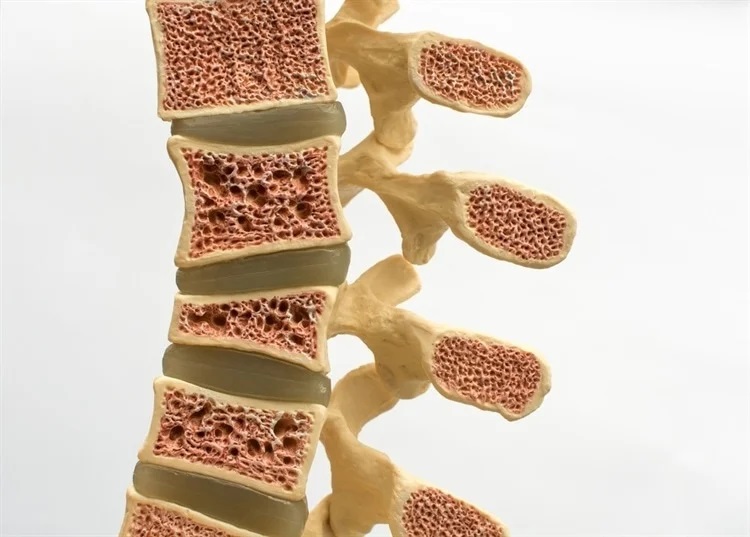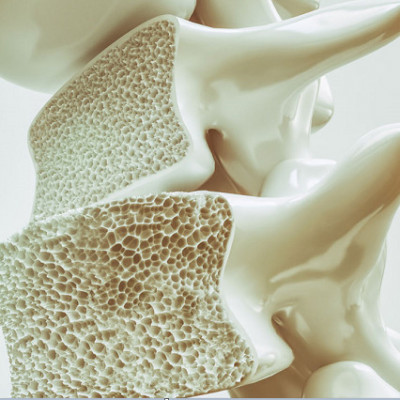What is Osteoporosis?
Osteoporosis is a bone disease that appears when bone mass and mineral density decline or when the strength and structure of bone are altered, resulting in loss of bone density and an elevated risk of broken bones or fractures.

Statistics from the Bone Health and Osteoporosis Foundation (BHOF) studies revealed that one in four males aged 50 and above and one in two females are prone to breaking a bone as a symptom of osteoporosis.
Osteoporosis is expected to cause around three million fractures and approximately twenty-five billion dollars in expenses annually by the year 2025, as per experts.
Dual-energy X-Ray absorptiometry (DEXA) and past low or fragility fractures are two methods used to diagnose osteoporosis in an individual.
The development of the disease is indicated by hip or bone mineral density measurements that are two and a half standard deviations or lower than the mean for healthy individuals.
Diagnosis and Treatment of Osteoporosis
In accordance with diagnosis, the initial line of treatment typically comprises fall prevention, adequate calcium intake (at least 1,200 mg daily), vitamin D intake (at least 700 – 800 IU daily), and receiving medical treatment with a bisphosphonate such as ibandronic acid.
Bisphosphonates slow the rate at which the human body breaks down bone. As a result, the risk of breaking a bone is lowered and bone density is retained.
Raloxifene (selective estrogen receptor modulator), teriparatide (parathyroid hormone) calcitonin, or hormone replacement therapies are also considered for treating certain patient subgroups.
What are the Challenges Faced During Treatment?
Despite these significant advances in treatment, many patients who would benefit from pharmacological therapy refuse to take anti-resorptive medications, particularly bisphosphonates. This is due to concerns about uncommon side effects and a lack of credible evidence supporting their long-term efficacy.
Therefore, there continues to be a clinical need to discover strategies for improving patient compliance and acceptance of these successful medications.
Another criterion is to keep coming up with novel medications that have no adverse effects and long-lasting anabolic effects on bone.
These adaptations could result in a significant reversal of this fatal illness of aging. Lately, the integration of nanoscience and drug delivery has shown promise for formulating a targeted, long-term treatment for osteoporosis patients.
How Can Nanoscience Help to Treat Osteoporosis?
One of the novel strategies to improve osteoporosis treatment is the development of nanomaterial-based drug delivery systems that target the bone. These nano-drug systems reduce systemic toxicity and enhance the therapeutic efficacy and pharmacokinetic profile of therapeutic agents.
Numerous nanoplatforms for the treatment of osteoporosis are cited in the literature. For instance, under the bioactive nanomaterial strategy for new bone production, layered double hydroxides (LDHs) and silicate, graphene nanoparticles are emerging as significant candidates.
Researchers at the University of Central Florida (UCF) recently discovered a novel ultrasound-dependent nano-droplet gene delivery method for the treatment of osteoporosis using cathepsin K (CTSK).
The technology was invented by Angela Shar (UCF biomedical sciences student) and Mehdi Razavi (an assistant professor) affiliated with UCF College of Medicine.

The article published in the journal Nanomedicine: Nanotechnology, Biology and Medicine, explained that the nanodroplet or nanobubble consists of a perfluorocarbon-based gas core that has been stabilized with albumin, encased with cathepsin K small-interfering RNA (CTSK siRNA), & integrated with the bone-targeting compound alendronate (AL).
CTSK plays a significant role in the bone resorption process. Nanobubbles target osteoclast cells, the bone cells that harbor the CTSK gene, while protecting the siRNA from coming in contact with the surroundings.
The gas core facilitates the detection and tracking of the nanobubbles. The delivery system also helps to prolong the effectiveness of the gene-silencing process by slowing the distribution of the drug.
The benefit of ultrasonic-responsive nanobubbles is that they serve as a dual-acting technology, in which ultrasound is used to disrupt bubbles, gene delivery, and even help bone development.
Commercial Technology
Many nanoscience companies are working towards developing diagnostic and treatment platforms for osteoporosis. Nanox is one such company.
Nanox is a company that creates, manufactures, and sells solutions for the nanotechnology sector. They develop medical imaging tools based on artificial intelligence (AI) to screen for early indicators of chronic disease in sizable populations.
The company received FDA approval for its healthOST device in 2022. This AI tool measures low bone density and vertebral compression fractures, which are linked to osteoporosis.
Dr. Kassim Javaid from The University of Oxford quoted, "we ran a pilot with Nanox.Al's vertebral compression fracture algorithm with the purpose of evaluating how Al based technology can help increase patient flow into Oxford's Fracture Liaison Service (FLS). The pilot was successful, as accuracy was above 90%."
Future Outlook
The progress in nanoscience has given rise to new techniques for improving the therapeutic features of osteoporosis treatments. Several nanocarriers, including bone-targeted nanoparticles, hold considerable promise for clinical applications in the delivery of drugs to bone niches.
These nanomedicines would help to extend the therapeutic window, improve the localized concentration of the drug, and lessen off-target negative effects. However, there has not been much research on the release profile and the associated mechanisms, particularly for recently created carriers.
Therefore, research focused on drug release, stability, and safety is now being conducted and supported by optimizing the nanocarriers. The future research required for clinical applications is directed towards incorporating nanoscience and would offer the possibility of potential treatment alternatives.
Read the original article on AZoNano.
